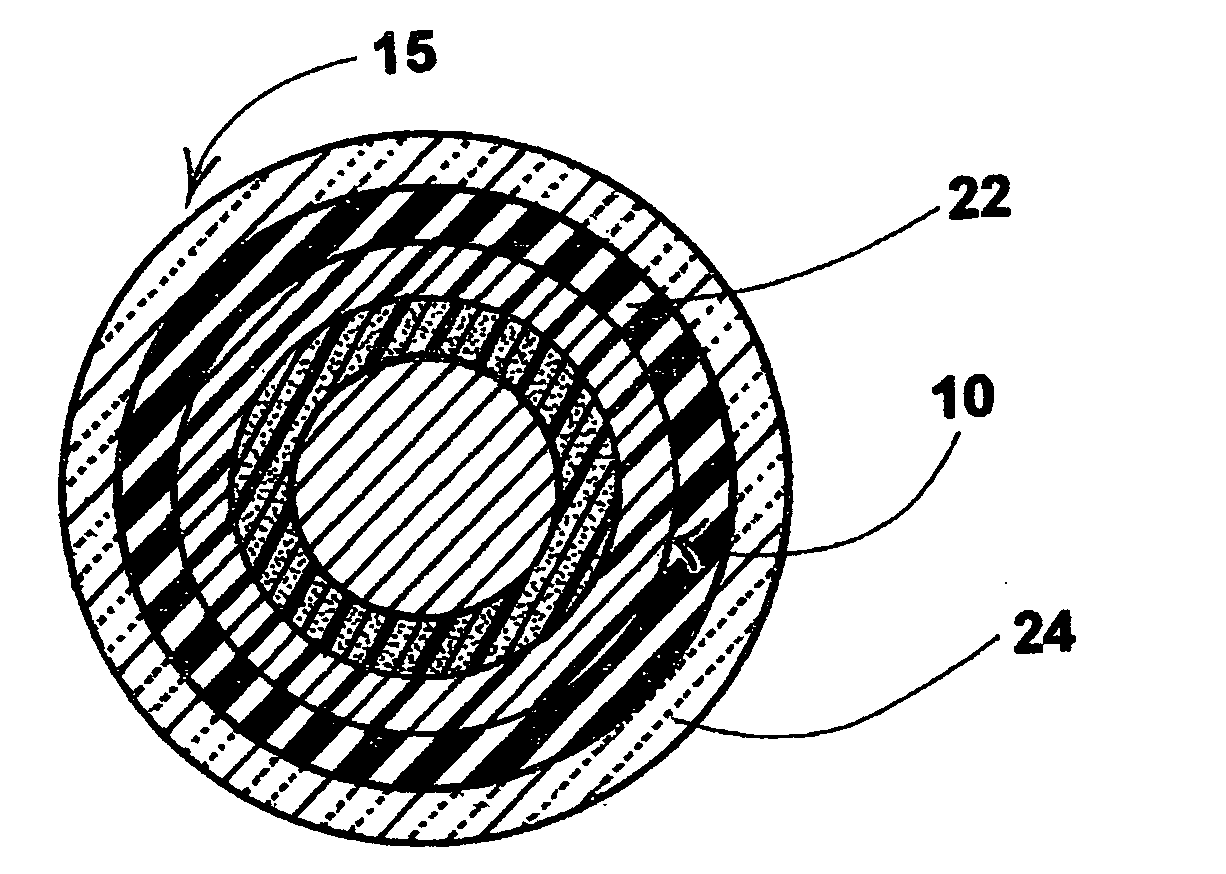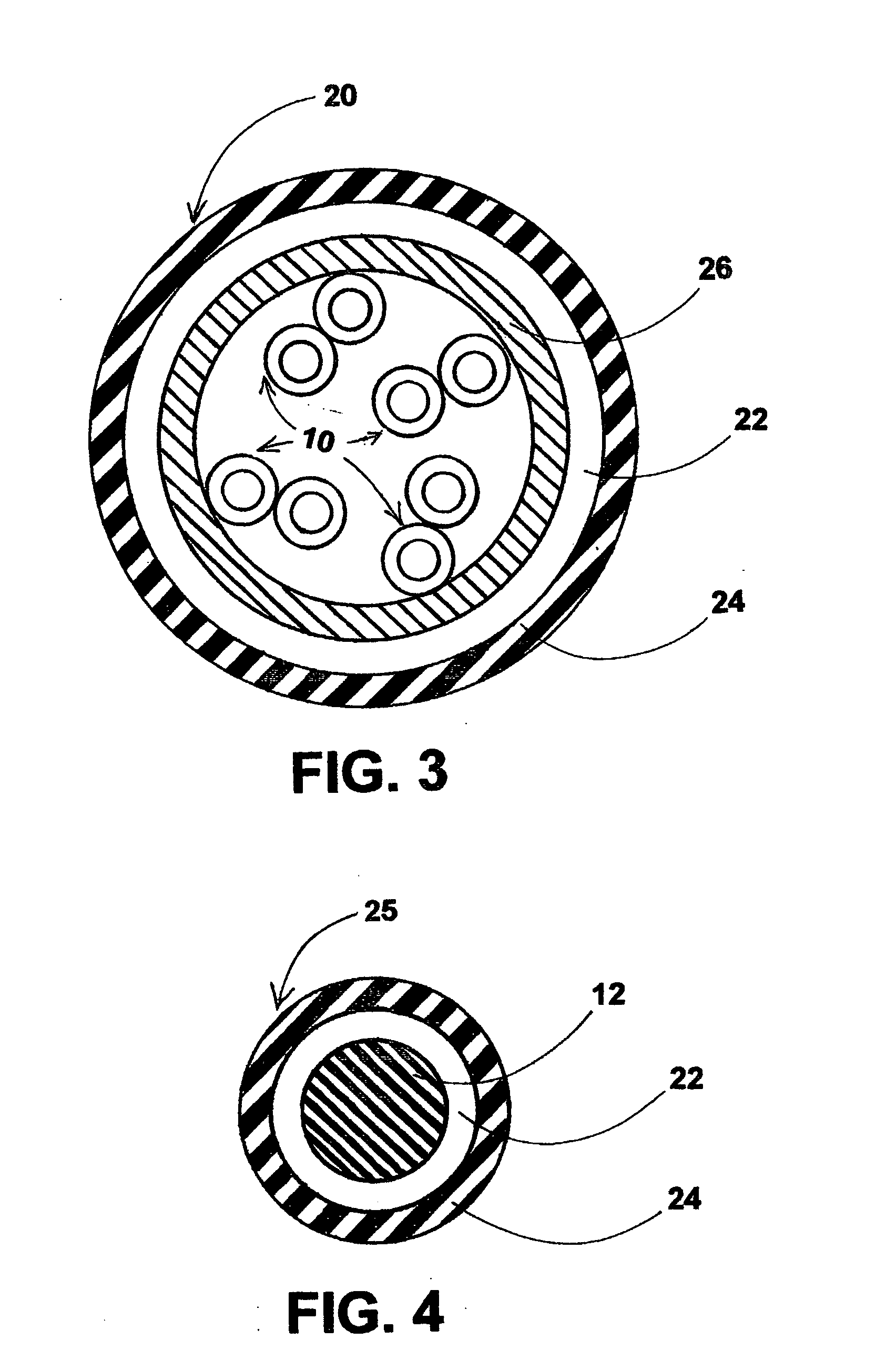Dual layer wire and cable
a technology of double layer wire and cable, applied in the direction of insulated conductors, cables, plastic/resin/waxes insulators, etc., can solve the problems of reducing the electrical performance of materials, affecting the overall performance of the system, and affecting the safety of persons and equipmen
- Summary
- Abstract
- Description
- Claims
- Application Information
AI Technical Summary
Benefits of technology
Problems solved by technology
Method used
Image
Examples
Embodiment Construction
According to the subject invention, a thermal and fire insulative dual layer coating for wire and cable construction in risers, plenums, specialty building wire and in transit applications is provided. One embodiment comprises providing a length of insulated wire with a polymer coating, jacketed with the dual layer comprising a non-halogen (flame retardant) polyolefin resin material as the inner layer and a non-halogen flame and thermal insulating polyolefin based compound containing an intumescent system as the outer layer of the dual jacket. A second embodiment uses the dual layer over a length of electrically conductive metal wire with the inner layer serving as the FR insulation and as a barrier against corrosion and the outer layer as a mechanical and thermal protective jacket.
As illustrated in FIG. 1, wires, 12, for electrical conduction can be insulated using solid polymer resins such as polyolefins and fluorinated ethylene propylene, 14, or with a foam resin of the same m...
PUM
| Property | Measurement | Unit |
|---|---|---|
| weight percent | aaaaa | aaaaa |
| thickness | aaaaa | aaaaa |
| thermal | aaaaa | aaaaa |
Abstract
Description
Claims
Application Information
 Login to View More
Login to View More - R&D
- Intellectual Property
- Life Sciences
- Materials
- Tech Scout
- Unparalleled Data Quality
- Higher Quality Content
- 60% Fewer Hallucinations
Browse by: Latest US Patents, China's latest patents, Technical Efficacy Thesaurus, Application Domain, Technology Topic, Popular Technical Reports.
© 2025 PatSnap. All rights reserved.Legal|Privacy policy|Modern Slavery Act Transparency Statement|Sitemap|About US| Contact US: help@patsnap.com



